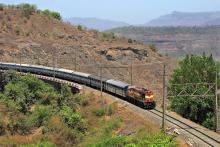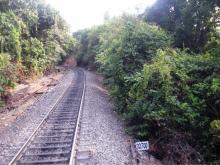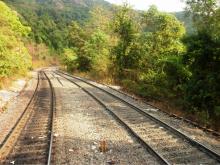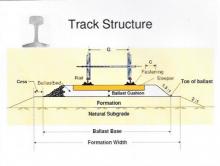This is the first in a series of blogs for our budding young rail enthusiasts. It is in the form of a first person account by a train presented in a manner that is easy to appreciate and understand.
I am sure all of you know me. Whether you have used my services or not, you all know that I am a train. You travel from Place A to Place B comfortably ensconced in my lap. To do so, your parents purchase a ticket, take you to the railway station, find the platform I am on and climb into me. In due course, you reach your destination, disembark from me and make way to your final destination. Looks simple, sounds simple and straightforward, appears uninvolved and undemanding. Yes, certainly! But only to you, the traveller. Let me assure you that this simple journey that you undertook involves an enormous amount of effort and a great deal of planning and inputs of not only a large number of railwaymen or women but also many who may not be directly part of the railways.
In this series of articles, I will tell you about myself: what and who I am, what it takes to create, manage and run me. I will also tell you about the myriads of inputs that I need and the enumerable systems that are required to keep me in perfect order. It is not my intention to go through the history of how I developed or go into too many technical details, but to tell you all about myself the way I am today in simple terms.
So, here goes! Let’s start with the basics...
The Track
First and foremost, I must have a right of way on which I can move. If this right of way is a normal road, then I am only a road vehicle. At best, I will be a road vehicle with one or two trailers. If the right of way is a waterway, then I am a ship or a boat. To be a train, the first requirement is to have a guiding track to run on. This guiding track is referred to in rail parlance as the track or permanent way. In fact, it is this permanent way that makes a railway a railway. It is called “permanent way” for the obvious reason that it is a “way” and it is “permanent” as opposed to me, who comes and goes and moves over the permanent way.
The permanent way comprises of two rails laid at a fixed distance apart. This distance at which they are kept apart is called the gauge. You will appreciate that the gauge has to be constant on one stretch of track or else, the vehicles that run on it will keep falling off. On the Indian Railways, the gauge that is most common is referred to as the Broad Gauge (or BG) and measures 1676 mm between the rails. Why this gauge was chosen is not very clear to me as in most of Europe and other countries like the USA that had established rail systems before our country did had what is today referred to as the Standard Gauge that measures 1435 mm. Later, some of the Princely states in India were permitted to build rail lines to the Meter Gauge (MG). This was done to save finances as a smaller gauge is much cheaper. Lastly, in the mountainous areas (and also in some Princely states to save even more money), narrower gauges were built. Two such gauges were used and still exist in the country. One is the 762 mm gauge and the other 610 mm. Thus, in India today, we have track laid to 4 different gauges – BG, MG and the two narrow gauges (NG). I am told that on the Delhi Metro, some of the new lines are laid to the European Standard Gauge, i.e. 1435 mm. Other Metro systems in the country have also chosen this gauge.
Today, about 94% of the rail lines in our country are BG. Only about 3.5% is MG and 2.5% NG, and the latter gauges are being fast converted to BG. The only non-BG lines that are likely to remain are those in the hills as only these lines can manage the sharp curves that are required when going up a steep slope.
The two rails are kept apart by what is called a sleeper. Today, most sleepers are made of concrete whereas in the not too distant past you had sleepers of wood, steel, even cast iron. Of course, there are steel fasteners that are used to fix the rails on the sleepers. This frame of rails and sleepers is then laid on a bed of ballast which comprises mostly of broken stones. The sleepers are embedded in the ballast. In cities and on station platforms, you may not see any ballast at all as the rails are laid in concrete. A cross-section of the track can be seen in the diagram titled Track Structure. The diagram also shows the cross-section of the wheels of a vehicle on the track.
It is only after this track is laid that you have a railway. Now, on this track, I am run. When we meet again, I will tell you about what happens to the track when it has to cross a river or a deep valley. In other words, I will tell you about bridges and viaducts.




